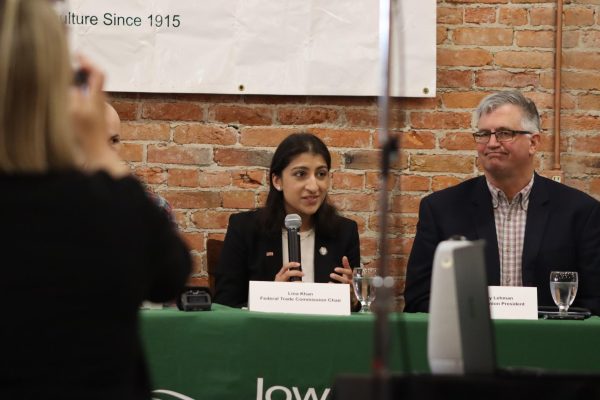Caucuses make it easy to take part
December 3, 2007
So you rolled out of bed the day before the Iowa caucus, still hanging out in Ames, and you’re not sure how to get involved. We’re providing you with a quick and informational guide to the Iowa caucus to help you get your voice heard.
The basics
The caucuses take place Jan. 3 and are held on a local, neighborhood level in preparation for each presidential election by the Republican and Democratic parties.
James McCormick, professor and chairman of political science, said caucuses have a “long history of where party adherence officials get together to decide on a particular candidate.”
“Both parties have separate caucuses, so you have to be signed up with a party,” McCormick said.
Russ Cross, chairman of the Story County Republican Party, said people do not have to be registered to vote prior to arriving at their precinct’s caucus. They can register there. They must register as that particular party for the event, but that can be changed later if desired.
Dianne Bystrom, director of the Catt Center for Women and Politics, said even if you are registered to vote in Ames, you can re-register the night of the caucus, in order to caucus in your hometown. She said out-of-state students would easily be able to participate in the caucus by registering the night of the caucus in Ames.
“You just have to be a resident of Iowa for 30 days,” she said. “It’s fairly simple in the state of Iowa to register and re-register.”
Where and how to caucus
McCormick said there are 764 precincts around the state holding caucuses in church basements, schools and homes.
In order to participate in the caucus, Cross said, people must have the intent of voting in that precinct, but nothing about the caucus is binding. People are not obligated to vote for the candidate they support at the caucus.
Cross said caucuses are open to the public and anyone wishing to learn more about the presidential candidates is welcome to attend – even if he or she does not wish to participate in the event. For both the Democratic and Republican parties, the caucuses are the first important step toward determining their official presidential candidates.
Bystrom said that to participate, students may want to attend early.
“Both the Democratic and Republican caucuses encourage you to show up at 6:30 [p.m.],” she said.
Democratic caucus
For Democrats, as soon as introductions and announcements are made, one supporter for each candidate gives a one-minute speech about that candidate, said Jan Bauer, chairwoman of the Story County Democratic Party.
After all the speeches are finished, people gather into what is called a preference group, Bauer said.
Bauer said people go to different areas of the room depending on which candidates they support, with one preference group for each candidate. Voters have the option to form an uncommitted group if there are enough voters who are undecided.
Bystrom said the unique part about the Democratic caucus is that you see “groups of people actually gravitate toward a sign on the wall.”
In order to be acknowledged as a “viable” group, each preference group must have at least 15 percent of the total attendance. If a group is formed which has fewer than that amount, voters move to another group, Bauer said.
At this point, preference groups try to persuade individual voters to join them, Bauer said.
Republican caucus
Republicans have a different approach for measuring the party’s support of each candidate.
“The biggest difference is that the Republican process is an anonymous process,” Bystrom said.
Cross said the first part of the Republican caucus consists of a vote, during which each participant in the caucus places an anonymous vote for his or her preferred candidate. The results of this vote are immediately tabulated and announced.
“[It is] more like voting in a regular election with a different format,” Bystrom said.
At both Republican and Democratic caucuses, people have the opportunity to discuss issues.
















